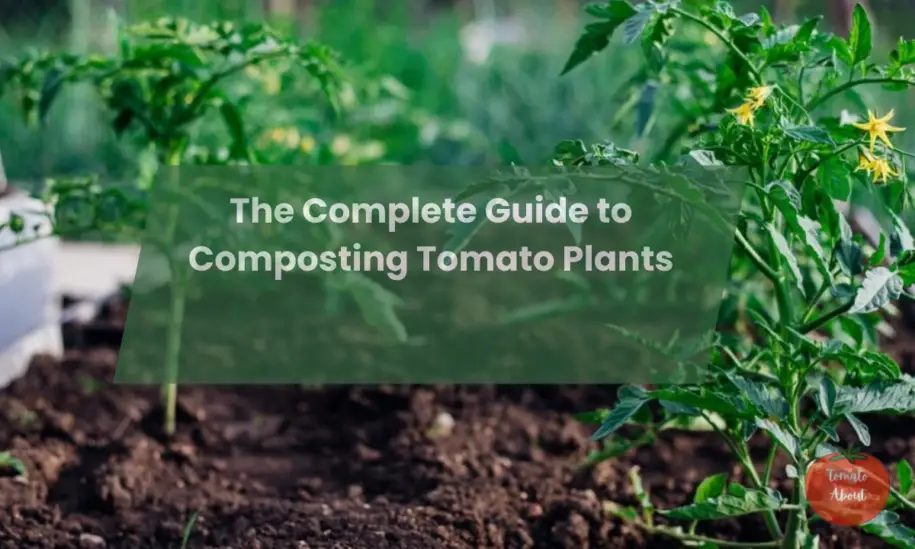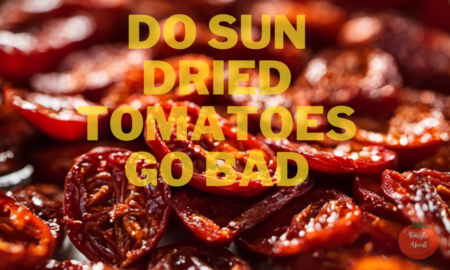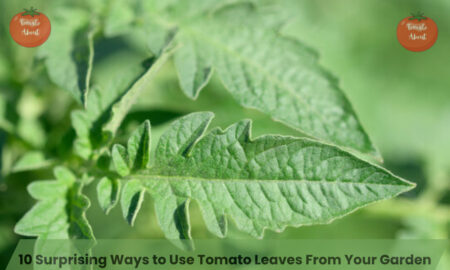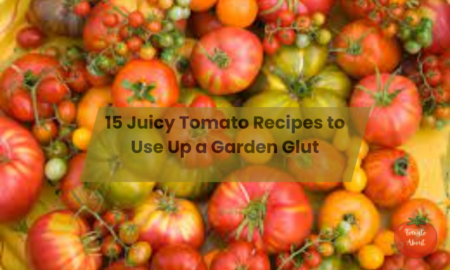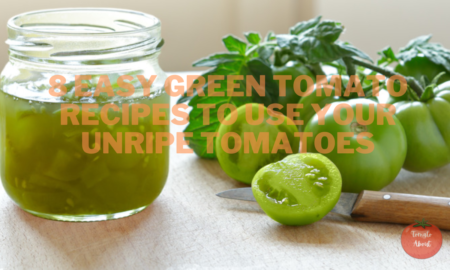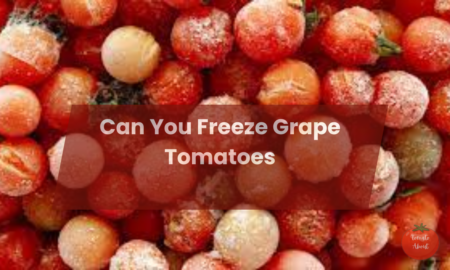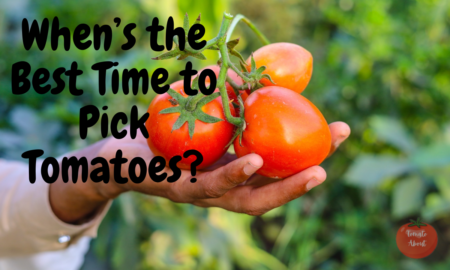The juicy red tomatoes weighing down the vines in your vegetable garden symbolize the bounty of summer. But when the growing season ends, you’re faced with a dilemma – what should you do with the disease-ridden, pest-infested old tomato plants?
Tossing them in the compost bin may seem like the easiest solution. But is it the right one?
Composting tomato plants is a controversial topic among home gardeners. Some claim it poses too many risks. Others say a well-managed compost pile can break down the tough vines without issue.
So who’s right? And is it ever safe to compost tomato plants in your backyard?
This complete guide on composting tomatoes will walk you through the key factors, benefits, risks, and best practices.
Why Compost Tomato Plants?
Composting is the process of converting organic materials like plant trimmings, leaves, and food scraps into a fertile, soil-like material called compost. Compost introduces beneficial microbes to the soil and provides a slow-release source of nutrients for plants. It’s one of the best things you can add to your garden beds each year.
Many gardeners hesitate to compost tomato plants because of concerns about diseases. While tomato vines can harbor disease organisms like blight and wilt fungi, the high temperatures reached during active composting will destroy most pathogens. As long as you add the vines to an active compost pile and allow the finished compost to cure for several months before use, it’s perfectly safe to recycle diseased tomato vines.
The other worry with composting tomato plants is that the seeds could sprout and give you volunteer tomatoes where you don’t want them. This is easily avoided by pulling up spent vines by the roots rather than cutting them off at the soil level. As long as you remove the bottom portions of the plants where the ripe tomatoes form, there will be no seeds to cause problems.
Overall, the benefits of composting tomato plants far outweigh the potential risks. Keep reading to learn the best practices for successfully composting your tomato crop at the end of each growing season.
Benefits of Composting Tomato Plants
There are many advantages to taking the extra time to compost the vines, stems, and leaves left over after harvesting your tomato crop:
- Nutrient recycling: Tomatoes are heavy feeders that require constant additions of nitrogen, phosphorus, and potassium. Composting the spent plants returns some of these nutrients to the soil for future use.
- Reduced landfill waste: Composting keeps large amounts of garden debris out of crowded landfills. As organic matter decomposes, it produces methane, a potent greenhouse gas.
- Improved soil structure: The organic matter in finished compost helps bind tiny soil particles into clumps, improving aeration and moisture retention. This also adds vital nutrients for beneficial soil microorganisms.
- A free source of compost: Rather than purchasing compost by the bag or load, you can make your own from garden waste. It doesn’t get any more local or sustainable than that!
As you can see, it’s well worth the bit of extra effort needed to compost tomato plants. Your garden will reap the rewards for years to come.
6 Tips for Effectively Composting Tomato Plants
Composting tomatoes isn’t completely off the table. With a few smart precautions, you can avoid potential issues.
Remove Diseased Plants
Inspect all tomato vines thoroughly as you clear them from your garden. Look for signs of fungal, bacterial, or viral infection: spotting on leaves or fruits, lesions, discolored vascular tissue, stunting, wilting, etc.
If plants show any disease symptoms, do not compost them. Dispose of diseased plants in the garbage to prevent the spreading of pathogens.
Shake Off Pests
Check under leaves and along stems for hitchhiking hornworms, fruit worms, whiteflies, and other tomato pests. Knock them off into a bucket of soapy water to kill them before composting.
Be sure to scout for and remove any hornworms blending in by camouflaging as stems. Their voracious appetites let them quickly defoliate and damage tomato plants once in your compost.
Remove All Fruits
Pick any remaining green or ripe tomatoes from vines you intend to compost. Discard any with rot or disease symptoms.
Chop the good fruit into small pieces and add to your compost separately from the vines. This prevents intact fruits with seeds from ending up buried.
Chop Up Vines
Use pruning shears or a machete to cut tomato vines and stems into smaller 6-12 inch pieces before adding to compost. The smaller you can make them, the faster they’ll decompose.
Avoid composting whole, unchopped tomato plants. Their thick, woody stems resist breakdown.
Maintain High Internal Temperatures
For thorough pathogen and seed destruction, your compost pile must maintain internal temps between 130-150°F for several weeks. This kills off most plant diseases.
Turn and mix compost regularly to circulate air and prevent “cold pockets”. Monitor temperature with a long-stemmed thermometer. Add high-nitrogen “green” materials like grass clippings to heat things up.
Apply Finished Compost Wisely
Before spreading composted tomato plants in your garden, wait several months after the pile cools and finishes. This allows any lingering seeds to die off.
Avoid applying tomato-based compost directly to seed beds. Instead, mix into planting holes for transplants or side-dress existing plants. This prevents volunteering.
The Risks of Putting Tomatoes in Compost
While composting tomato plants provides benefits, several potential issues may also arise:
Spreading Disease
Tomatoes are prone to these common diseases:
- Early and late blight
- Verticillium and fusarium wilt
- Bacterial spot
- Tobacco mosaic virus
If infected plants enter compost, those pathogens can spread to your garden when you reuse the finished compost.
Tomato waste also presents ideal conditions for diseases to develop after harvest. Even if a plant looks disease-free, pathogens may be present.
Encouraging Pests
Tomato pests like stink bugs, hornworms, fruit worms, and whiteflies can cling to vines when clearing garden beds. Adding infested vines to compost gives these pests a perfect overwintering spot.
When you spread compost later, you may release pests back into your garden unintentionally.
Regrowing Tomato Plants
Composting whole fruits and vines means seeds can overwinter and then germinate in spring. This causes unwanted “volunteer” tomato plants to pop up in beds, lawns, and pathways.
Slow Decomposition
The large, woody stems and vines of tomato plants break down very slowly in compost compared to other ingredients like grass clippings and leaves.
Incomplete decomposition can leave big chunks of vines that are difficult to incorporate back into garden soil.
Alternative Uses for Tomato Plants
If you decide the risks of composting tomatoes are too great, don’t send those vines to the landfill just yet. Here are some other eco-friendly ways to use up plant waste at season’s end:
- Chop plants into segments and use them as mulch around other vegetables and flowers. Nutrients will slowly return to the soil as vines break down.
- Add chopped vines to your leaf mold pile. After decaying for a year or two, the resulting leaf mold makes wonderful “black gold” for your garden.
- Bury vines and stems in a dedicated composting trench in an unused area of your yard. Mark the spot and dig up the rich compost in a year or two.
- Chop and use vines as a nitrogen source for sheet mulching new garden beds. Layer with cardboard/newspaper, manure, straw, and compost.
- Pile vines between mulched garden rows as you remove them. The buried vines will compost in place over time as worms break them down.
- Add chopped vines to a vermicomposting bin to be consumed by composting worms. They’ll help break down the woody material.
- Use diseased plants as compost or mulch for non-food plants like trees, shrubs, and ornamentals. The pathogens are host-specific.
- As a last resort, put vines in yard waste pickup for industrial composting. Avoid landfilling!
The next time you finish harvesting those plump, ripe tomatoes in your garden, think twice before throwing the vines in your compost bin.
With some smart preparation and management, composting tomato plants can safely recycle nutrients back into your soil. If you decide it’s too risky, put those plants to use elsewhere in the garden.
Either way, don’t let a healthy tomato crop go to waste! With a little planning, you can avoid problems and make the most of those garden nutrients.
Frequently Asked Questions
Can you put tomato plants with blight in compost?
Tomato plants affected by blight should not be added directly to compost piles. The fungal spores can overwinter and infect next year’s tomato crop. However, you can put blighted plants into a separate hot compost pile. Maintain temperatures between 130-140°F for several weeks to destroy the spores before using the finished compost.
How long does it take tomato plants to decompose in compost?
Chopped tomato vines and stems take 2-4 months to fully decompose when mixed into an active compost pile. To speed things up, use pruners to cut plants into smaller pieces before adding them. Turning the pile frequently prevents material on the outer edges from drying out.
Can you put tomato suckers in the compost?
Absolutely! Tomato suckers are the small shoots that form in the joints of the main vines. Pruning these off redirects the plant’s energy into the existing fruits. Just make sure to chop the woody stems into smaller pieces before adding suckers to your compost pile.
What’s the best carbon to mix with tomato plants?
Shredded leaves, straw, sawdust, and dried grass clippings are all excellent high-carbon materials to balance the nitrogen in tomato vines. If adding sawdust or dry leaves, pour on some water as you build the pile. Aim for the moisture content of a wrung-out sponge.
Can you put rotten tomatoes in compost?
Yes, overripe or rotten tomatoes can be added to backyard compost piles. Chop or mash them up first to expose more surface area for decomposition. Because they are so wet and dense, limit rotten tomatoes to no more than 10% of the total volume.
Wrapping up!
Composting tomato plants takes some extra planning compared to composting yard trimmings or kitchen scraps. But with the right techniques, you can turn leftover tomato vines and stems into black gold for your garden. Follow these steps for composting success:
- Allow tomato plants to fully die back after the last harvest.
- Uproot vines entirely and chop them into smaller segments.
- Layer the chopped vines with high-carbon materials like leaves or straw.
- Build a large enough pile to generate high internal temperatures.
- Turn or stir the compost weekly to introduce oxygen.
- Make sure the moisture level remains consistent throughout.
- Allow finished compost to cure for 3-6 months before using it in beds.
The next time you’re pulling up those sad, drooping tomato vines at the end of summer, don’t discard them in the trash. With a little bit of effort, you can recycle 100% of the plant into free nutrient-rich compost for next year’s garden. Your tomatoes will thank you!

